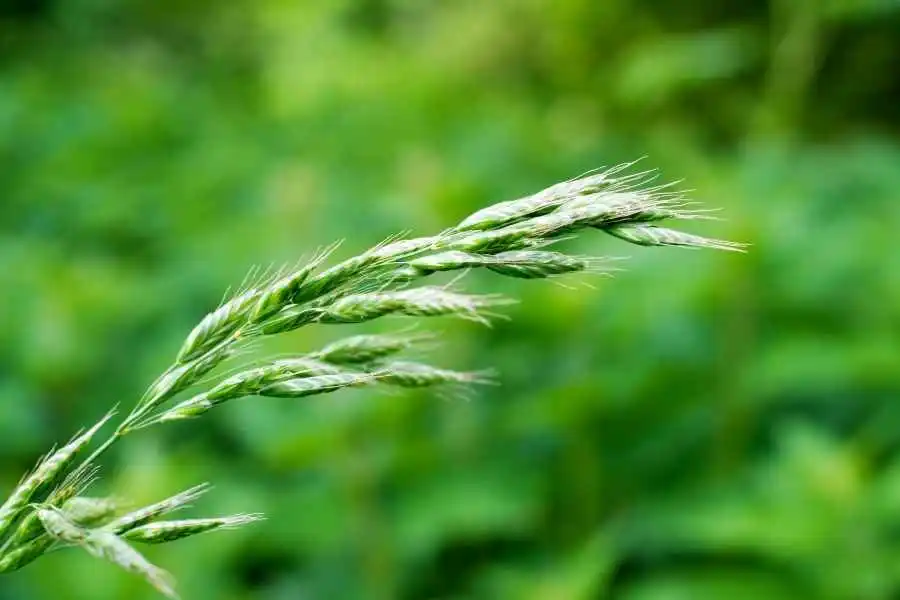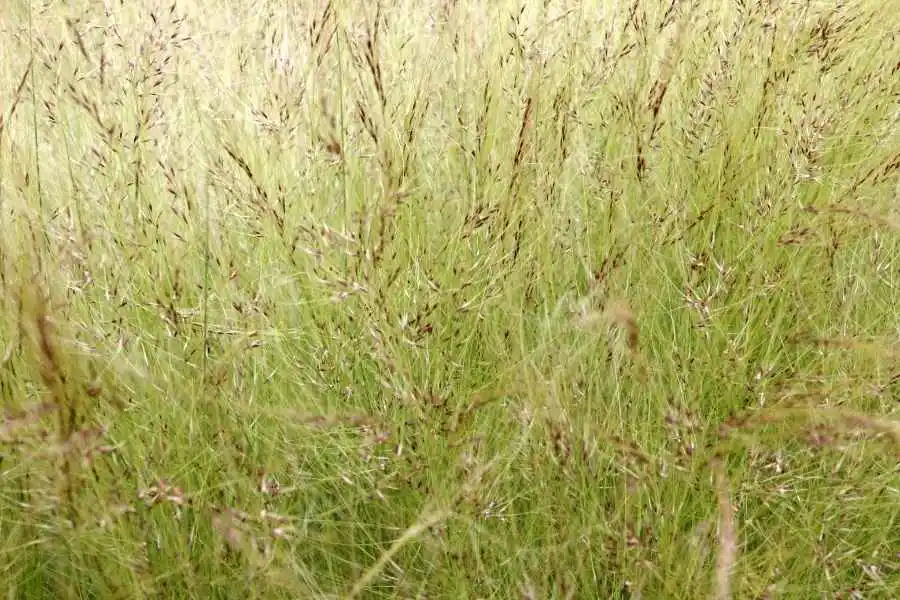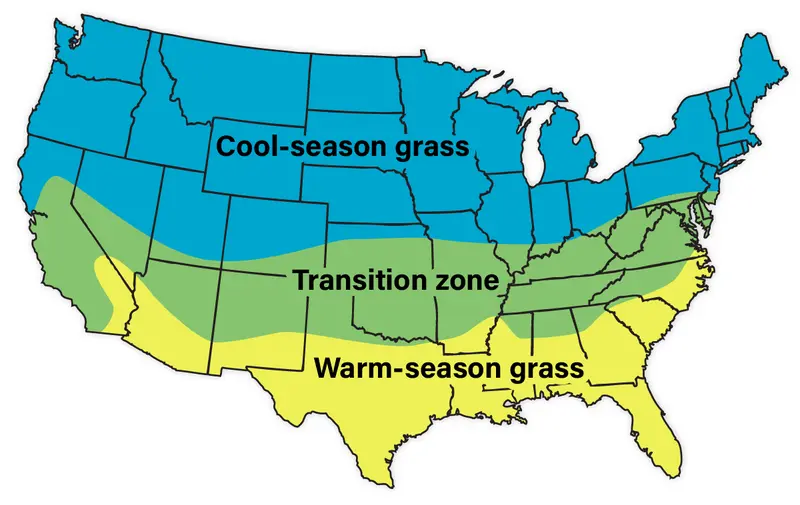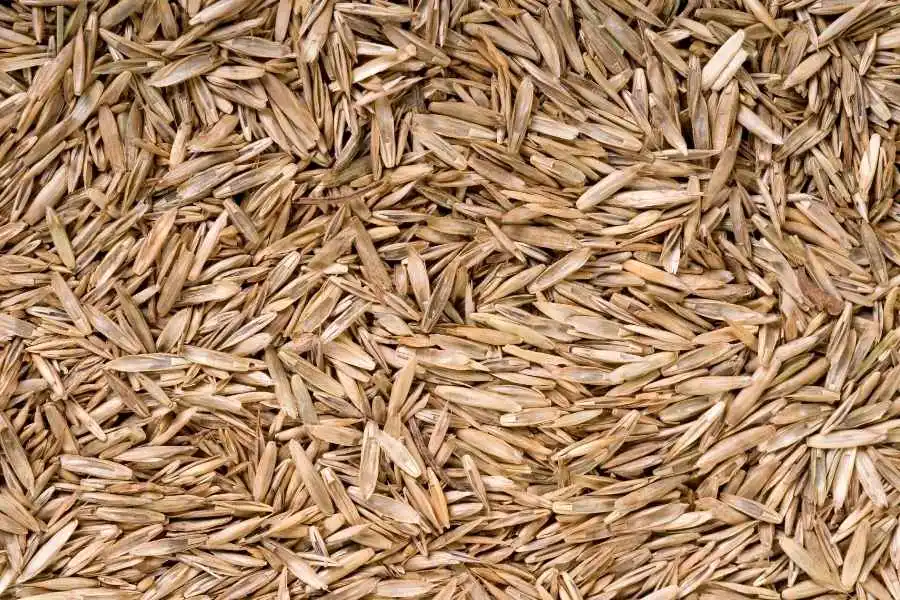Your lawn doesn’t need to start and end with expensive seeds. Saving money and creating a sustainable lawn is easy and natural with your own grass seed. You’ll feel like a real farmer and won’t have to run to the store for extra seeds. In this blog post, I’ll show you how to harvest your own grass seed in the best way possible so that you can enjoy a beautiful landscape all year round. Get ready – let’s plant some seeds!
How to Harvest Your Own Grass Seed

If you want to grow attractive grasses from seed, stock up on seeds in autumn for spring sowing. They germinate quickly and produce young plants that will flower by late summer. Gather seeds on a dry day and store them in marked envelopes in a cold, dark tin until spring.
Seed-producing grasses
Not all turfgrasses generate viable seeds for overseeding and patching. Few warm-season grass cultivars yield viable seeds. Perennial ryegrass, tall fescue, and Kentucky bluegrass yield seeds.
Kentucky bluegrass seeds itself into lawns in spring and fall. Slower than other cold-season grasses to germinate. Kentucky bluegrass develops pyramidal panicles with 30-100 seed-bearing spikelets.
Centipedegrass self-sows. Its 3-5-inch raceme inflorescence has two rows of spikelets. When spikelets mature, they generate viable seeds distributed by wind, reseeding the lawn. Common bermudagrass has outcrossed seeds and 3-7 spikelets each whorl.
Choose a harvesting location
The excellent place for collecting grass seeds is partial to full sun. First, select an area free from weeds because you don’t want sneaky weeds spreading weed seed on your grass.
How big is your harvest area? It depends on the size and extent of your grass. For example, you’ll need 2 to 4 pounds of seed to overseed a 1,000-square-foot lawn.
Stop cutting grass
Stop mowing where you’ll collect seeds to let seed heads grow. After your grass has flowered, wait 20 to 30 days to harvest. Stop mowing by late summer.
When to harvest seeds

Timing seed harvest is a crucial decision for grass seed growers because most of them don’t know how long does it take for grass seed to grow. Grass seeds mature 20-30 days after flowering. Flowering and seed development take several days to two weeks. Seed heads emerge at different times, causing uneven ripening.
Hot, dry weather speeds ripening. Cool, wet weather delays seed development. Irrigated grasses have more ash, which can cause more shattering than dryland grasses. Swath when the seed is medium to the hard dough and still attached.
- Test the seed head for moisture (35-50%) when to swath. Most grasses store their seed for 10-15 days; however, it can take 3-4 days to break.
- Cut a few seed heads from your lawn to test it.
- Check seed color. Green means unripe. If they’re tan, orange, or golden, go further. Seeds, please.
- If a seed is mushy, it needs more time.
- If you can dent the seed with your thumbnail, it’s ready to harvest.
Simple test
Hit the seed head with your palm. The seeds can be collected if the seed top cracks. Seventy-five percent of the seeds should mature before harvest. Seed heads ripen from the top, so look at the entire flower head while assessing color.
- Cool-season grasses bloom in late spring or early summer, so harvest them in mid-July to late August.
- Warm-season grasses bloom in late summer, so harvest them from August to October.

List of grasses with time to harvest and harvesting method
| Grass | When to Harvest | Harvest Method | Comments |
| Bentgrass •Colonial •Creeping •Velvet | Late July or early August. Hand-rubbing separates the seed from the seed head. | – Windrow mower – Seeds are small and light; avoid air. | Doesn’t break easily. |
| Bluegrass •Canada •Kentucky | Late July or early August. Yellow or brown seeded heads. 45-50% seed head wetness. | – Swath or straight combo may be run twice. – Adjust airflow. – Some growers use rotary or axial flow combines. | Doesn’t break easily. Causing cottony filaments near seed root. |
| Bromegrass • Meadow • Smooth | Late July or early August. Brown heads and stems. 50-55% seed head moisture | – Straight combining light crops may benefit from swath. – 10 days after swathing, when seed moisture is 14%, combine. – Slower cylinder speed than for wheat, more closed concaves on rub-bar cylinders, bigger sieves, air off | Meadow brome shatters easier than smooth brome a week ago. Expect 10-20% dockage. |
| Canarygrass • Reed | Mid-late July. Half the seeds are dark or grey. 50-55% seed head moisture | – Swathing decreases breakage. Raise the table to avoid basal leaves during straight mixing. – Reduce cylinder speed and air intake. – Adjust concaves to avoid dehulling seeds. | Fragile. Wind can destroy crops. Top quality requires 55% viable seed. |
| Fescue • Creeping Red | Early August. Seed head moisture 35-40% | – Swath straight combination – Slower cylinder speed – Widest concave clearance. | A delayed harvest causes damaged seeds. Sweep in the evening or early morning to avoid shattering. |
| Fescue • Meadow • TaII | Early August. Brown with green heads (5-15 percent of seeds immature). 45-50% seed head moisture | – Adjust barley settings. – Good concave and rub bars are needed to thresh slippery strawed crops. | A delayed harvest causes damaged seeds. Early swathing leads to light, shrinking seed. |
| Foxtail • Creeping • Meadow | Early July. 55-60% seed head moisture | Strippers and specific equipment. Combine at 900 rpm. 1/4-inch concave spacing (6 mm). Top sieve 3/4 open, bottom 1/2. Adjust as needed. Remove all screens. Shut off all air. | Before producing these grasses, growers should research production and handling methods. |
| Orchard Grass | Mid-July to early August. Light brown heads, greenish stems. 35-40% seed head moisture. | Cut 12-18 inches (30-35 cm) high to avoid basal leaves. Reduce airflow. Set cylinder speed and concave to prevent dehulling. | Combining straight isn’t advised. |
| Ryegrass • Italian | Greenish crop with 45% seed wetness. | Swath and combine when seed moisture is about 35%. Direct combining might cause severe shattering losses. | Fragile when mature; not winter hardy. |
| Ryegrass • Perennial | Pulling between fingers removes 1-2 florets. Greenish crop with 50-55% seed head wetness. | – Combine and swath. – Direct merging causes large shattering losses. | Fragile when mature; not winter hardy. |
| Timothy | Early to Mid-August. Grey-brown heads with a gold base. 40-50% seed head wetness. | 50-60% ripe is when to swath. Straight merge when head tips shatter. – Adjust cylinder concave to 5-10 mm in front and 1.5-3 mm in back at 600-800 rpm. | Dehullable. Variety affects shattering, dehulling, and maturity. |
Collect seeds
Three methods of gathering seeds in the backyard. acquiring seeds using:
- Gloves
- Grass shears/scissors
- Brush harvester
The ideal solution relies on your space, time, and sweat.
Handpicking seeds:
This is the easiest, most difficult way to feel like a pioneer.
- Wear gloves to avoid grass burns.
- Hold the inflorescence base with one hand.
- Slide your thumb and index finger up the plant while gently squeezing.
- Your fingertips will collect seeds. Put the seeds in a bag.
- Repeat for each plant.
- After gathering seeds, mow your lawn on high using the one-third guideline to prevent lawn damage.
Pick seeds with shears:
Cut grass and put it in a seed bag rather than individually pressing plants to release seeds. This requires less fingerwork but requires stooping or kneeling.
- Cut grass stems below seed heads.
- Bag grass clippings. The remaining seeds will dry in the seed heads and fall to the bottom of the bag.
- Drizzle seeds. Keep seeds cold, dry, and pest-free.
- Refresh! Shake the bag to keep grass spikes from sticking.
- After 6-8 weeks, shake the seed bag again. Then, remove seeds from plant matter with a sieve.
- Keep until next season.
- Compost dry plant material to embrace “reduce, reuse, recycle.”
Handheld brush harvester seeds:
A handheld brush harvester is expensive, but it does practically all the job. Use a handheld brush harvester if you plan to harvest your grass every year or if manual harvesting hurts your back.
- Cut grass below its seed heads with a brush harvester.
- Rotate your body to collect more seed heads depending on the harvester you buy.
- Sieve your harvester to remove leaves and twigs.
- Refilter to remove extra plant matter. Store seeds.
Store your seeds

The grass seed harvest won’t be complete. If possible, clean and dry the seed to remove moist, green debris and stems. High-moisture storage, even for brief periods, reduces germination. Seeds can be artificially dried using warm or unheated air. Seed viability may be affected if drying air exceeds 38°C (100°F).
Depending on the type, grass seed can be stored at 8-12% moisture. Initial seed quality, seed moisture, and storage conditions affect storage life. Cool, dry storage promotes seed germination.
After filtering your seeds:
- Store them in an airtight container in a cold, dry place to prevent fungus and pests.
- Store grass seed in a squirrel-proof container.
- Store seed in a metal garbage bin or well-sealed glass jars.
Temperature and humidity variations shouldn’t affect the storage space. Mold loves humidity, and moldy seeds won’t germinate.
The total relative humidity and temperature should never exceed 100 if you have a thermometer and hygrometer. If your area has 50% relative humidity, the temperature should be 50°F or colder. Next season’s seeds will germinate under ideal conditions.
Aftermath removal
Before regrowth, remove harvest residues from swathed fields as soon as possible after harvest. Removing residue decreases disease and pest problems and promotes light penetration, boosting tiller production.
The aftermath can be hay or grassland. Using leftovers as hay or pasture can boost seed yields by 35%. Fall and winter pastures include Kentucky bluegrass and creeping red fescue. Most perennial grasses produce reproductive tillers in late summer and fall; utilize moderate stocking rates to protect plant crowns.
Burning can also remove harvest debris but avoid damaging plant crowns. Heavy swaths burn uniformly and fast without hot patches that injure reproductive tillers. Burning requires a local government permit.
Why not buy seed?
When your grass is thin and needs overseeding or reseeding, you’ll have to spend a lot of money. Seed mixes cost $60 to $140 for a 10,000-square-foot lawn.
Many people pay hundreds to prepare and overseed their grass. However, using your seed to aerate and overseed your grass saves money.
Care about the environment? Eco-friendly grass seed harvesting: Seed firms use energy to grow, package, and ship seeds. Growing your own seed reduces your carbon footprint.
FAQ about how to harvest grass seed
How long can I store my seeds?
Fresher seeds are more likely to germinate. You can store seeds for up to a year, planting seeds from the previous season will ensure strong germination rates and prevent barren spots.
Does weather affect seed growth?
Yes! Temperature variations and weather extremes have an impact on seed maturity rates. In contrast to cold, wet temperatures, seeds develop more quickly under hot, dry conditions. If your region had a dry summer, check your grass seeds early to determine if they’ve developed.
When should I overseed a lawn?
When to put grass seed depends on regional variations. In the upper U.S., overseed cool-season grass in late summer or early fall. In the south, overseed warm-season grass in late spring to early summer.
Verdict
Reusing grass seeds is a great method to save money, reduce waste, and help the environment. You can turn your lawn into a sustainable, low-waste space.



